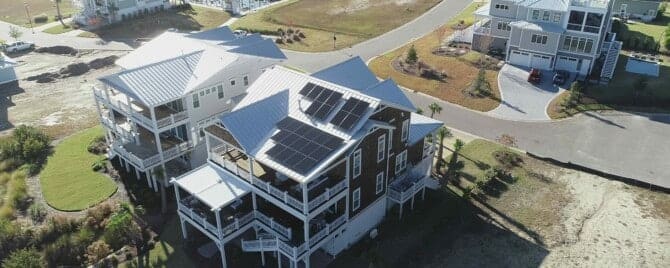An impressive NREL-validated 24.1 percent world record.
by Eric Wesoff
27 June, 2016
SunPower once again holds the record for the world’s most efficient rooftop solar module, achieving an NREL-validated 24.1 percent.NREL scientist Keith Emery, manager of the PV cell and module performance laboratory, provided the verdict in a release: “The module measured 11310.1 cm2 (aperture area) and had a power of 272.5 watts. We recorded 24.1 percent efficiency, which is a new record for silicon module efficiency.”
The record SunPower module was made “using laboratory solar cells of 25 percent mean efficiency” and is based on its commercially available module architecture. In February, NREL verified that a SunPower production panel had hit 22.8 percent efficiency.
Late last year, SolarCity made the claim that solar panels coming off of its 100-megawatt Silevo pilot production line were setting world records for solar module efficiency as “the world’s most efficient rooftop solar panel, with a module efficiency exceeding 22 percent.” A week later, Panasonic claimed the crown at 22.5 percent module efficiency.
An updated chart might help clear things up.

As covered in PV Magazine, Panasonic held the record for a while, with a 22.5 percent conversion efficiency verified by Japan’s National Institute of Advanced Industrial Science and Technology — which “builds upon the 25.6% efficiency record the company set in 2014 at cell level.”
When we reported on SolarCity’s record panel claim late last year, it boasted an oddly precise 22.04 percent module-level efficiency as measured by the Renewable Energy Test Center (not a designated test facility). The silicon-based bifacial PV cell combines n-type substrates, copper electrodes, thin-film passivation layers, and a tunneling oxide layer that yields high conversion efficiencies. At the time, SolarCity claimed that its module would be “the highest-volume solar panel manufactured in the Western Hemisphere.”
The record panel was manufactured on the company’s 100-megawatt pilot production line — its Buffalo factory won’t be at full production until 2017, with a target of 10,000 solar panels per day at full capacity.
How the proposed acquisition of SolarCity by Tesla will impact the new module factory remains uncertain.



